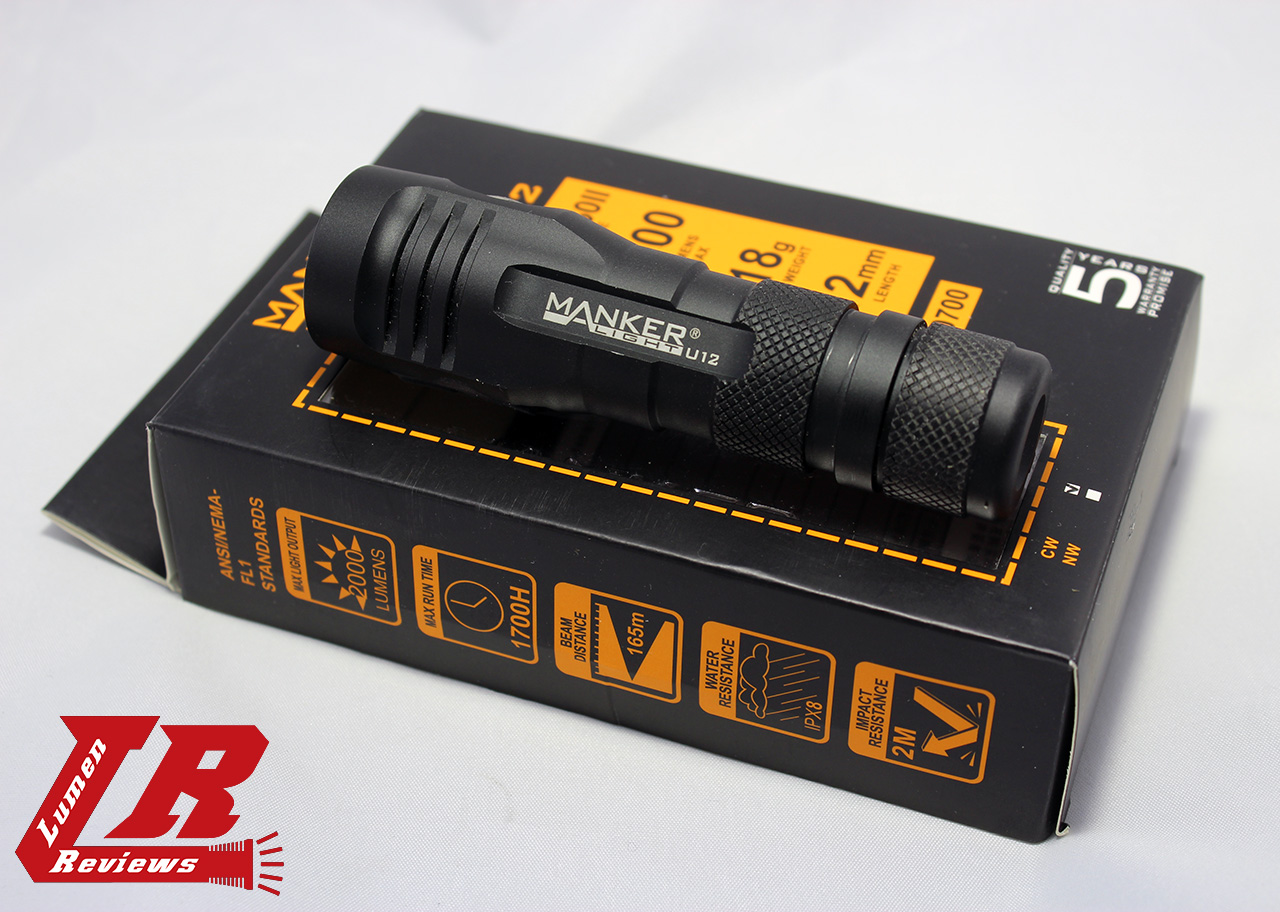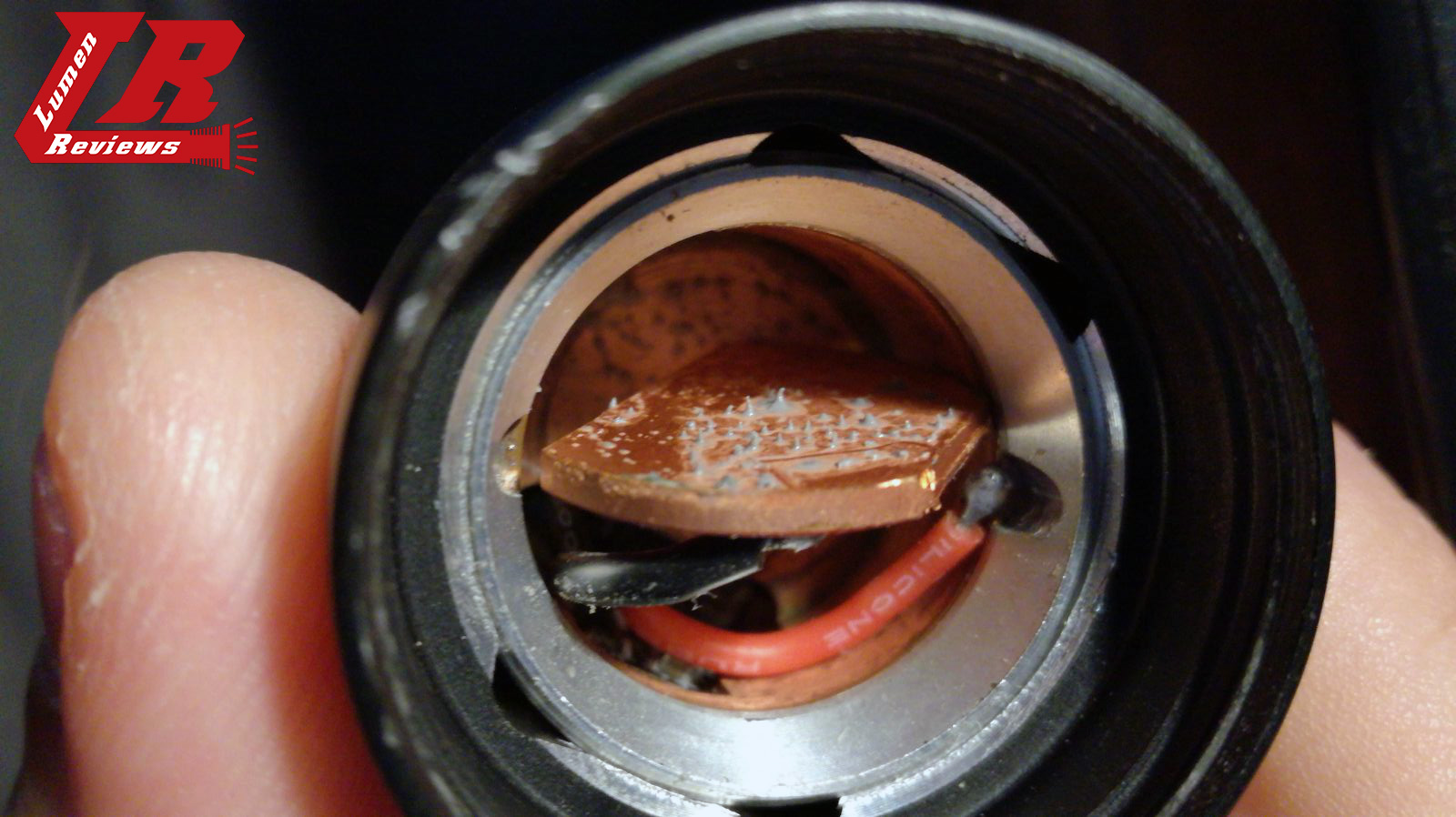I received the Manker U12 from Manker for the review.
.
.
The U12 is the new EDC from Manker, It can be seen as the updated version of the already known and appreciated U11.
The new U12 packs a XHP50 emitter, and is powered by a non proprietary 20700 cell, rechargeable via USB-C port. The U12 is available both in a CW and NW version. I got the CW one.
.
.
Please note that I received a pre-production sample with minor imperfections, that won’t be present on the sale version.
.
.
Here are the Specs
Emitter: CREE XHP50 II
Maximum output: 2000 lumens
Maximum beam intensity: 6800cd
Maximum beamdistance:164meters
Working voltage: 2.8v –4.35v (overdischarge protection)
Driver: Most efficiency constant current circuit
Material: Aircraft-grade aluminum body
Surface treatment: Premium Type III hard-anodized anti-abrasive finish
Lens: Toughened ultra-clear glass lens with anti-reflective coating
Waterproof: IPX-8 (2meter under water)
Impact resistance: 2meters
Tail stand
Dimensions: 112mm (length) x 31mm (Diameter)
Weight: 118g(without battery)
Accessories: O-ring *1, holster *1, Lanyard *1, USB Type C cable *1, pocket clip *1, 20700 rechargeable battery *1.
Specifications:
- Moonlight 1-5lm 1700hrs
- Low 130lm 16hrs
- Medium1 390lm 6.5hrs
- High 870lm 3hrs
- Turbo 2000lm-870lm 3min - 2.9hrs
- Strobe 2000lm
Max light intensity: 6800cd
Beam distance: 164M
Shockproof stand: 2M
Waterproof stand: IPX8
The Manker U12 comes in this box


Here is the U12: The design is the same of the U11, but the U12 is slightly longer and wider.



Here with the 20700 4250mAh battery

And with a 18650

At the head there is the single stage electronic switch and the USB-C port for recharging the battery.


Now the LED under the switch stays always on bot as a locator and a battery meter.
It is clearly visible with low light

The light only removable part is the tailcap.

The anodized, clear cut threads at the tailcap, that hosts a double nested golden spring.

On my sample the spring assembly fell out because it wasn’t glued. Manker told me they forgot to add glue to my sample.

At the head, the contact point for the positive pole of the cell is a golden spring.

With the U11, the slimmer and less powerful version (note that on my U11 I replaced the original CW XP-L emitter with a XP-L Hi Warm)



.
.
.
The UI

Battery Indicator:
- Blue: More than 75%
- Purple: 50%
- Red: Less than 20%
Lock out:
One click - double - triple from any mode to lock out the flashlight. (Only the battery indicator works when lock out)
Engineering Mode (Choose output level for moonlight mode):
Long press for off and still hold on, the side button batttery indicator will turn on and then quick click for 4 times to get access to engineering mode. One click to check different level and long press to make your final choice.
.
.
.
Output and runtime
Measured with the provided 20700 battery






I don’t know many EDC lights that can sustain a 1000ish lumen output continuously.
.
.
.
For those who ask how hot the light becomes:
.
.
.
Beamshots
The big emitter in the overall compact emitter gives a flood beam, suitable for short distances. The power helps a bit with the throw factor, but the light is best suited for distances around 50-80 meters.


.
.
.
My thoughts
My pre-production run sample was affected by flaws (spots in the anodization, unglued spring assembly), but Manker reassured me none of that will be present on the production run.
As I am writing this review, the USB C rubber cover fell out of its place. To my eyes it looks like on the U12 the rubber cover is hosted in place by a drop of glue, instead of the classic pressure fit fitting.

I hope to just had an unlucky sample, and I am awaiting your feedbacks guys.
The XHP50 II in this light is well conjugated with the high performance and the high capacity cell. This means that, compared to all the other 18650 powered lights, the U12 will have a longer runtime. The output is well regulated (as in flat) for the tested outputs. I don’t know many EDC lights that can sustain a 1000ish lumen output continuously.
Size and weight are reasonable for a light of this size. I have tried to charge the 20700 (which is actually around the 74mm mark long) but every battery charger I own (Nitecore D2, SKYRC MC3000, single slot micro USB charger powered) can’t fit in the slot the 20700, so you are kind of stuck charging using the USB-C port of the light, using a charger with cables and magnets, or a different charger from the ones I own.
I used the U12 with regular IMR 18650 cells with flat tops, and I had no problems.
I like the fact that the firefly is now settable from a firefly-like mode, to a generally more usable, around tenths of lumen output mode (not 5 lumens as advertised), this allows also for better level spacing.
The sheath pouch has a flap that should have been a bit longer.
.
.
.
.
That’s how the review should have ended.
But I kept on the testing, removing the bezel, glass and reflector, to make thermal tests to see how much the LED baseplate becomes hot.
Don’t consider the numbers on the scale as actual temperature readings.

.
.
What happened was that the light started going crazy, before one of the cables de-soldered itself from the baseplate.
That’s when I found out the baseplate basically didn’t have thermal paste or glue underneath it, that caused the baseplate to detach from the body of the light once i removed the reflector.


.
I don’t think I am gonna do more tests on this sample anytime soon.
If Manker has fixed all these small mistakes on the production run, the U12 is a solid candidate as an EDC with a slightly larger size, but that packs a lot of output and runtime (the 20700 basically holds as much energy as a 18650 + a RCR cell).
.
.
Thanks to: AntoLed for the camera help, the luxmeter and the thermal camera.
